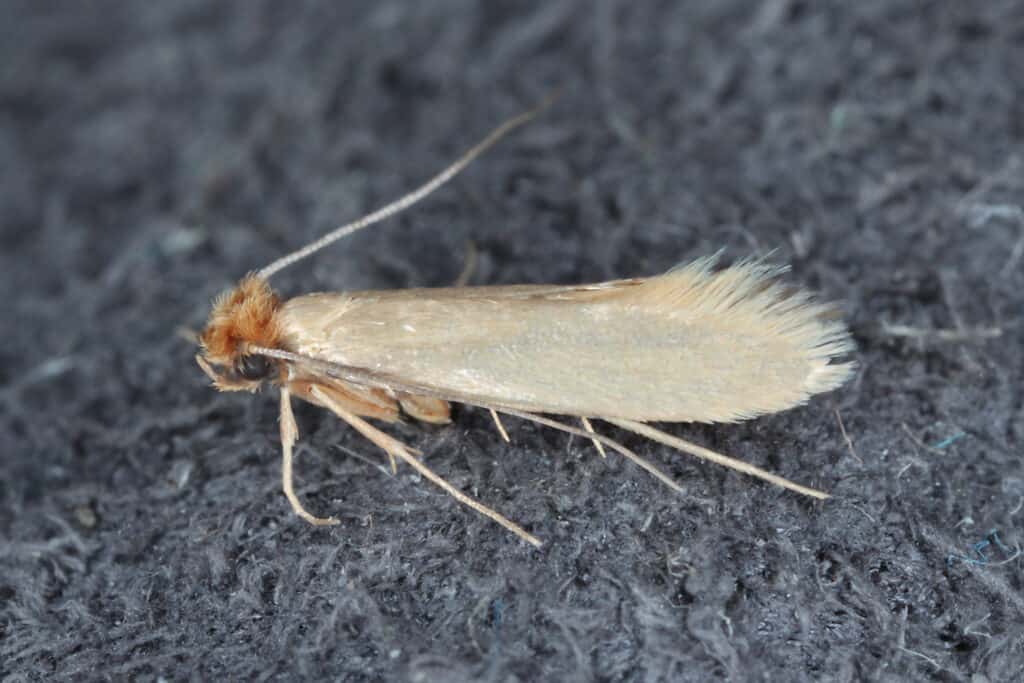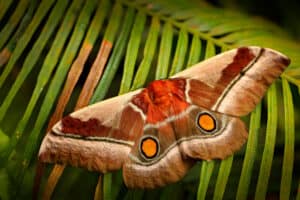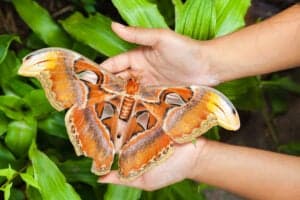Why are there so many moths in your house?
It’s never a good feeling when insects start coming inside the house, and it’s not just because of the ick factor. Bugs can take a toll on your bank account too. Pantry moths and clothes moths can cause a lot of damage. That’s why the second you start seeing these unwanted guests, it’s time to take action. And the first step to take is determining what type of infestation you’re dealing with.
How can you tell these two tiny moths apart? Read on to learn the top differences between the pantry moth vs. clothes moth.
1. Pantry Moths Prefer Warmer Weather

Warm spring weather increases the chance of pantry moth infestations.
©Jurik Peter/Shutterstock.com
Both moths can be active year-round, however, pantry moths prefer warmer weather. It’s more likely pantry moths will show up during late spring and summer. Along with their seasonal preferences, pantry moths also like to sleep in. During the day these moths can be found resting. If you’re dealing with an infestation, look up at the ceiling for evidence of resting moths. By sunset, pantry moths are active, so it’ll be easy to spot them moving around.
2. Clothes Moths Are More Difficult to Spot
Most homeowners don’t realize they have clothes moths until they step into their closet and see the infestation. This is because these small moths prefer staying in one place, which can make detecting an infestation a bit tricky. Pantry moths, on the other hand, are much easier to spot because they’re active. If there’s a pantry moth infestation the insects will be seen flying from one food source to the next.
3. Air-Tight Containers Deter Pantry Moths

Containers with tight-fitting lids are the most effective in preventing pantry moth infestations.
©Kristen Prahl/Shutterstock.com
To keep pantry moths away use airtight containers, these can be glass or plastic. What matters most is that the lid fits securely. If it’s a plastic container it needs to be a high-grade plastic. Pantry moths are notorious for chewing through plastic and cardboard. You’ll also want to avoid using containers that have twist-on lids. Pantry moths sometimes lay their eggs on lid jars, and they’re not as air-tight as you might think.
Finally, no matter how severe the infestation is, you’ll have to do some cleaning. Completely clean out your pantry. Take all of the food out and throw away anything that’s not properly sealed. Be sure to throw away the food outside, otherwise, the moth larvae will find their way back to the pantry.
4. Doing Laundry Helps Prevent Clothes Moths
Doing laundry helps prevent clothes moth infestations from happening again. Clothes moths are attracted to the smell of sweat found on dirty clothes. So cleaning the clothes helps discourage the moths from coming back. Another incentive is to rid clothing of any eggs or larvae that might be hiding on them.
After everything’s been laundered, it’s time to store clothing in air-tight containers. If you plan on using mothballs, review the latest mothball tips and safety advice. Mothballs contain naphthalene and sometimes paradichlorobenzene, both of which can be hazardous when used incorrectly. Finally, if you have furs, reach out to a department store or furrier to ask about any cold-vault storage services they offer.
5. Pantry Moths Cause Food Loss
The biggest problem with pantry moths is that they ruin otherwise good food. Females lay anywhere from 100 to 300 eggs near a food source. The larvae then attack the food sources, chewing through any plastic or cardboard that’s in their way. The moth larvae prefer feeding on dry ingredients. The only containers they can’t get through are air-tight containers and canned foods.
6. Clothes Moths Hate the Light

Clothes moths are usually found in one place, rather than flying around like pantry moths.
©Thomas Kleidysz/Shutterstock.com
Not all moths are attracted to the light. Clothes moths hate the light, so they’re almost never seen on the move. Instead, these insects prefer to stay in one comfy dark spot.
Clothes moths only move when they absolutely have to, which isn’t very often. Pantry moths, on the other hand, have to fly from one spot to the next in constant search of food. Overall, if a moth is flying around, it’s probably a pantry moth.
7. Pantry Moths Are Usually Slightly Smaller
Pantry moth vs. clothes moth; who’s bigger? Both insects are similarly sized, but the pantry moth is slightly smaller. Clothes moths are usually ½ inch long, while pantry moths tend to be around ⅕ inch long, with an ⅝ inch wingspan.
Pantry moths usually has a gray/bronze color on their bottom half, with a gray-yellow top half. The outer wings sometimes have a red-brown hue, while the other wings are more gray. While these wing colorations and patterns are the norms, they’re not always the case. A pantry moth’s wing pattern can change depending on the season and environment.
8. Clothes Moths Are More Beige
If you’re seeing little beige moths flying around, it’s probably clothes moths. Clothes moths are more beige colored than pantry moths, but it’s a subtle difference. They’ve also been described as having a light-brown, yellow color, also known as being buff. Depending on the species, clothes moths can even be brown.
9. Clothes Moths Cause Property Damage
Adult clothes moths don’t eat at all, but the larvae are another story. Clothes moth larvae love eating materials such as silk, feathers, keratin, and wool. In some cases, the moths also feed on carpets and wall insulation. Depending on what they feed on, a single infestation can cause thousands of dollars in damage. Things can be particularly expensive with clothes moths too because they’re discrete so infestations go unnoticed for a long time. By the time someone realizes they have clothes moths, there’s a lot of damage has likely been done already.
The photo featured at the top of this post is © Jurik Peter/Shutterstock.com
Thank you for reading! Have some feedback for us? Contact the AZ Animals editorial team.






